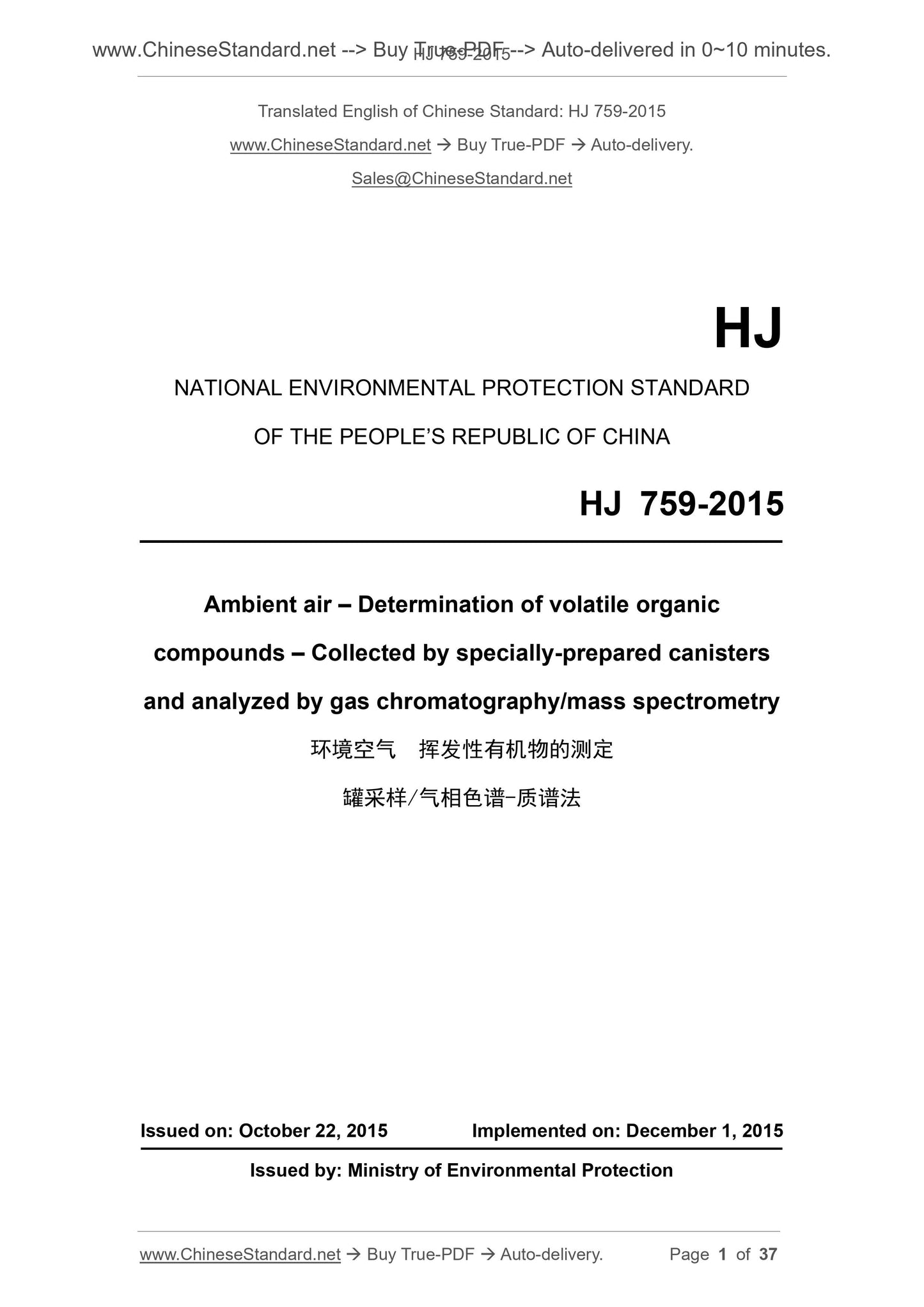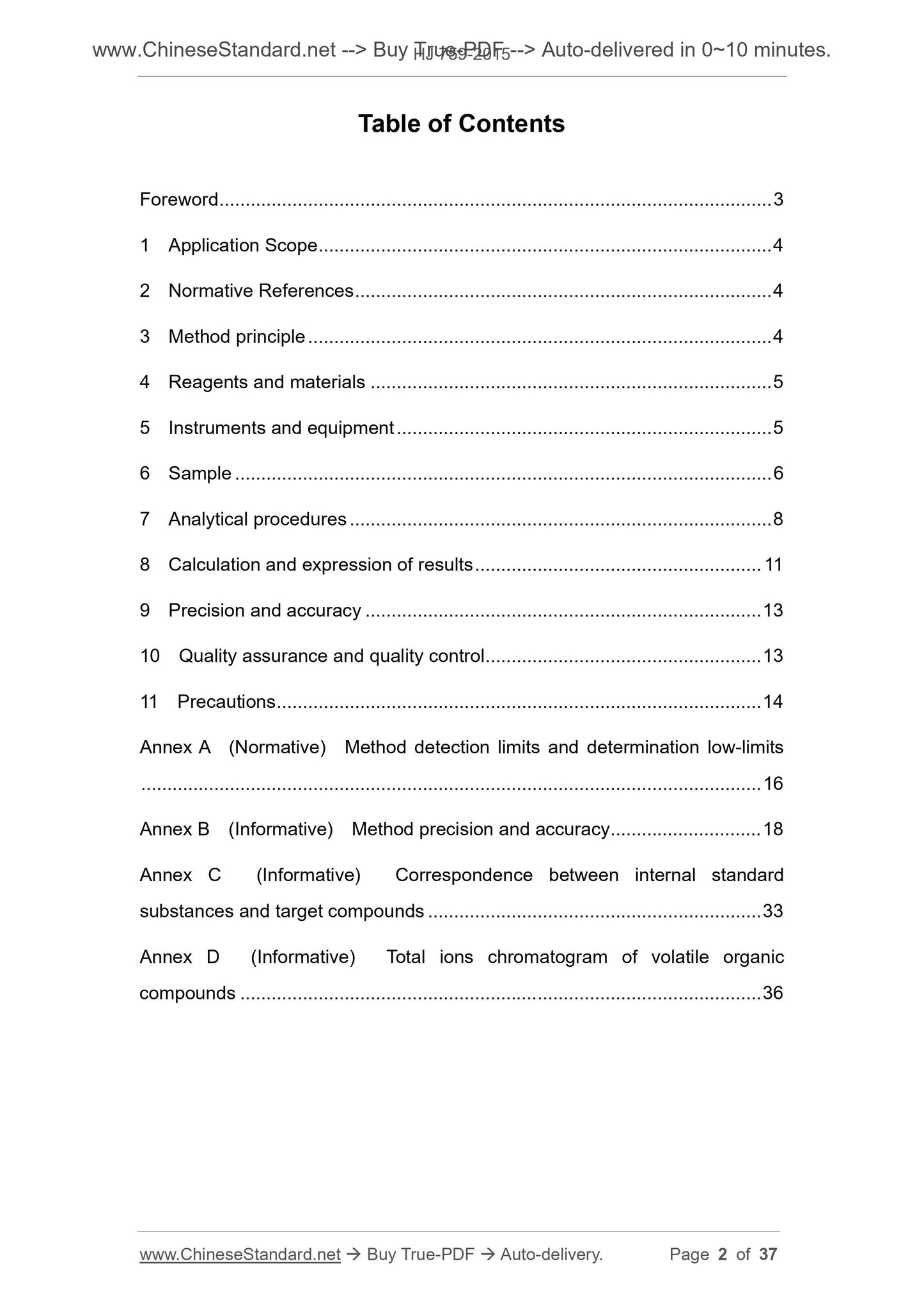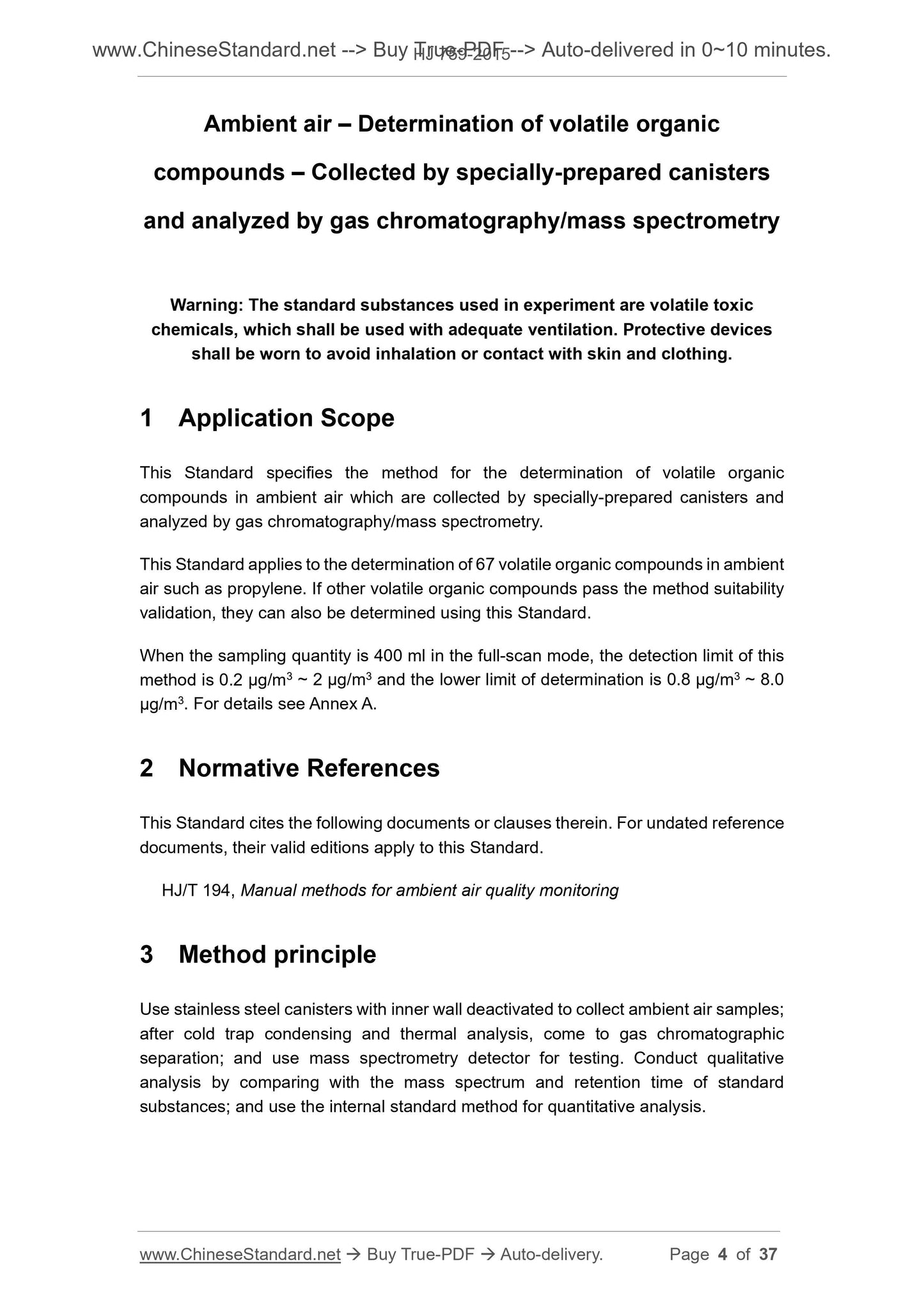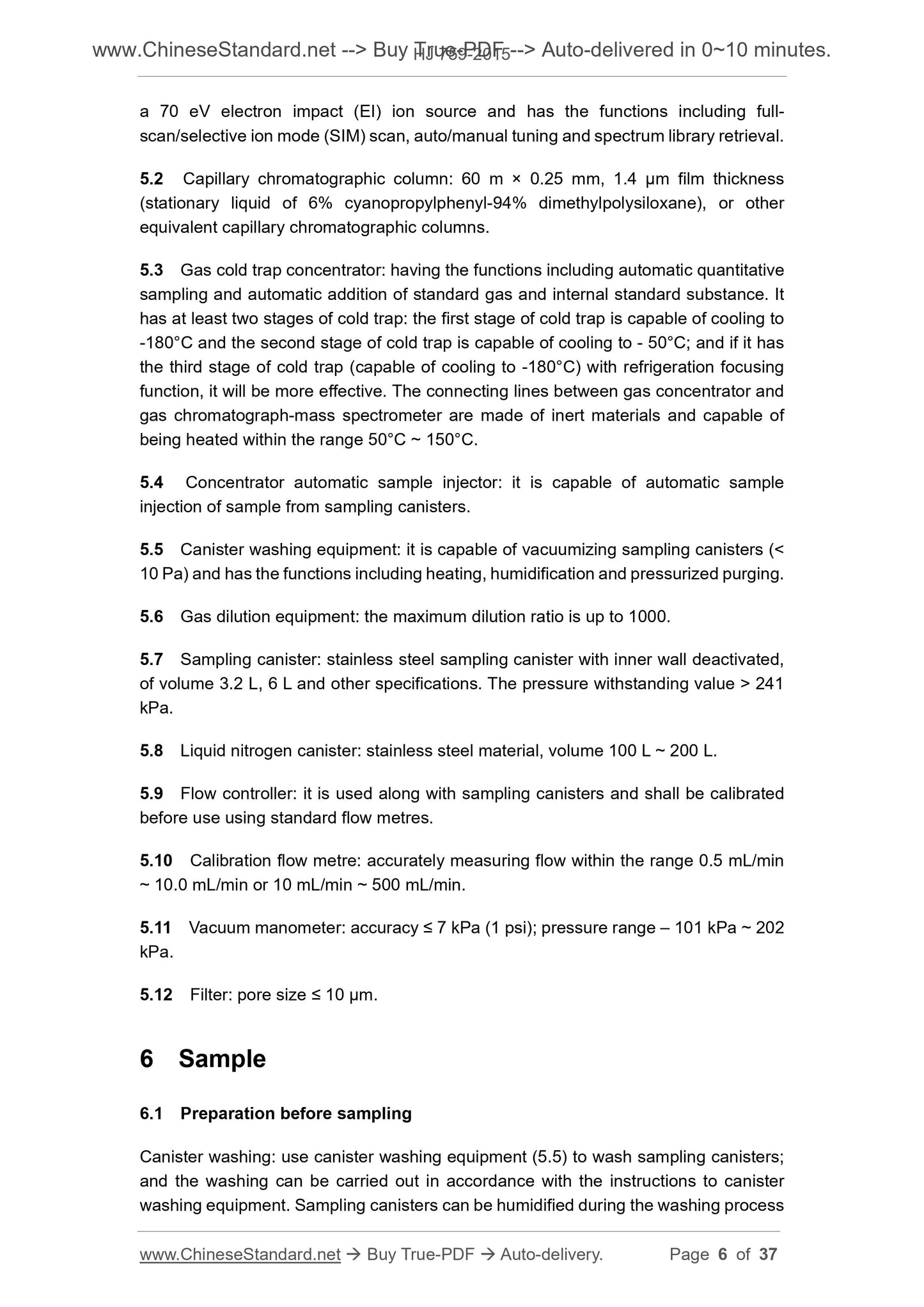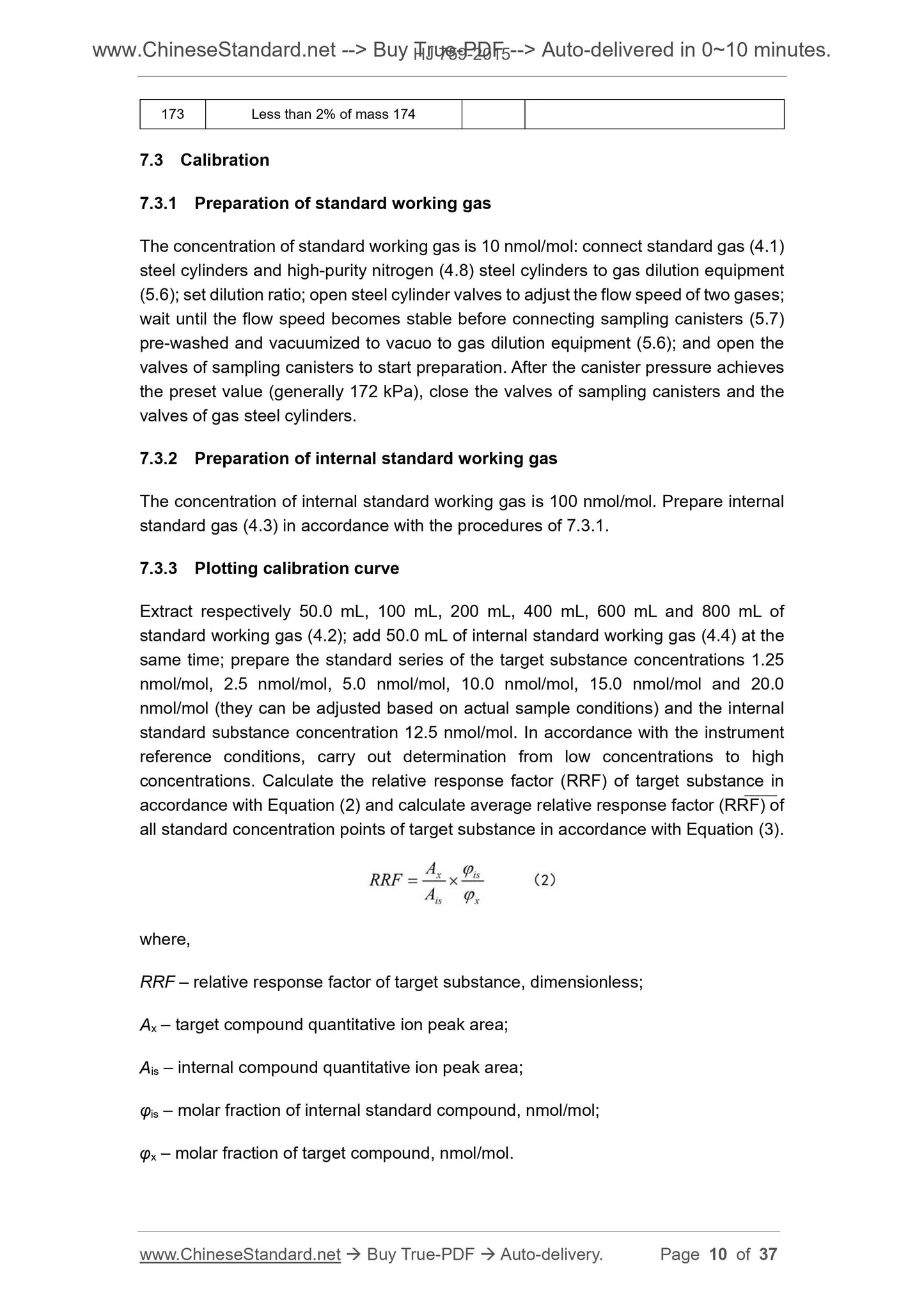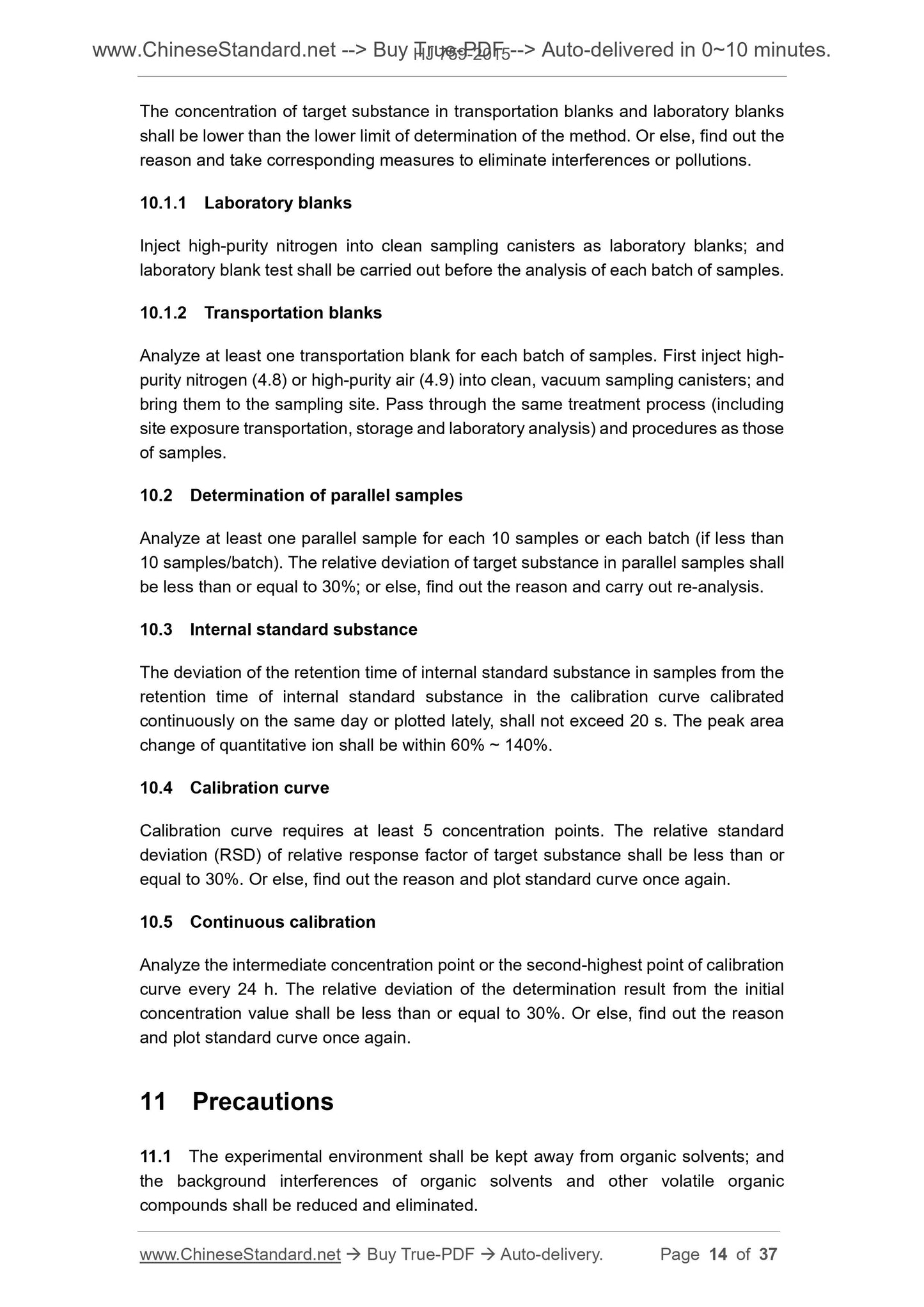1
/
of
6
www.ChineseStandard.us -- Field Test Asia Pte. Ltd.
HJ 759-2015 English PDF
HJ 759-2015 English PDF
Regular price
$175.00
Regular price
Sale price
$175.00
Unit price
/
per
Shipping calculated at checkout.
Couldn't load pickup availability
HJ 759-2015: Ambient air. Determination of volatile organic compounds. Collected by specially-prepared canistersand analyzed by gas chromatography/mass spectrometry
Delivery: 9 seconds. Download (and Email) true-PDF + Invoice.Get Quotation: Click HJ 759-2015 (Self-service in 1-minute)
Newer / historical versions: HJ 759-2015
Preview True-PDF
Scope
This Standard specifies the method for the determination of volatile organiccompounds in ambient air which are collected by specially-prepared canisters and
analyzed by gas chromatography/mass spectrometry.
This Standard applies to the determination of 67 volatile organic compounds in ambient
air such as propylene. If other volatile organic compounds pass the method suitability
validation, they can also be determined using this Standard.
When the sampling quantity is 400 ml in the full-scan mode, the detection limit of this
method is 0.2 μg/m3 ~ 2 μg/m3 and the lower limit of determination is 0.8 μg/m3 ~ 8.0
μg/m3. For details see Annex A.
Basic Data
| Standard ID | HJ 759-2015 (HJ759-2015) |
| Description (Translated English) | Ambient air. Determination of volatile organic compounds. Collected by specially-prepared canistersand analyzed by gas chromatography/mass spectrometry |
| Sector / Industry | Environmental Protection Industry Standard |
| Classification of Chinese Standard | Z15 |
| Word Count Estimation | 30,363 |
| Date of Issue | 2015-10-22 |
| Date of Implementation | 2015-12-01 |
| Quoted Standard | HJ/T 194 |
| Regulation (derived from) | ?Ministry of Environment Protection Bulletin 2015 No.62 |
| Issuing agency(ies) | Ministry of Ecology and Environment |
| Summary | This standard specifies the determination of volatile organic compounds in ambient air canister sampling/gas chromatography - mass spectrometry. This standard applies to the determination of ambient air propylene and other 67 kinds of volatile organic compounds. |
Share
